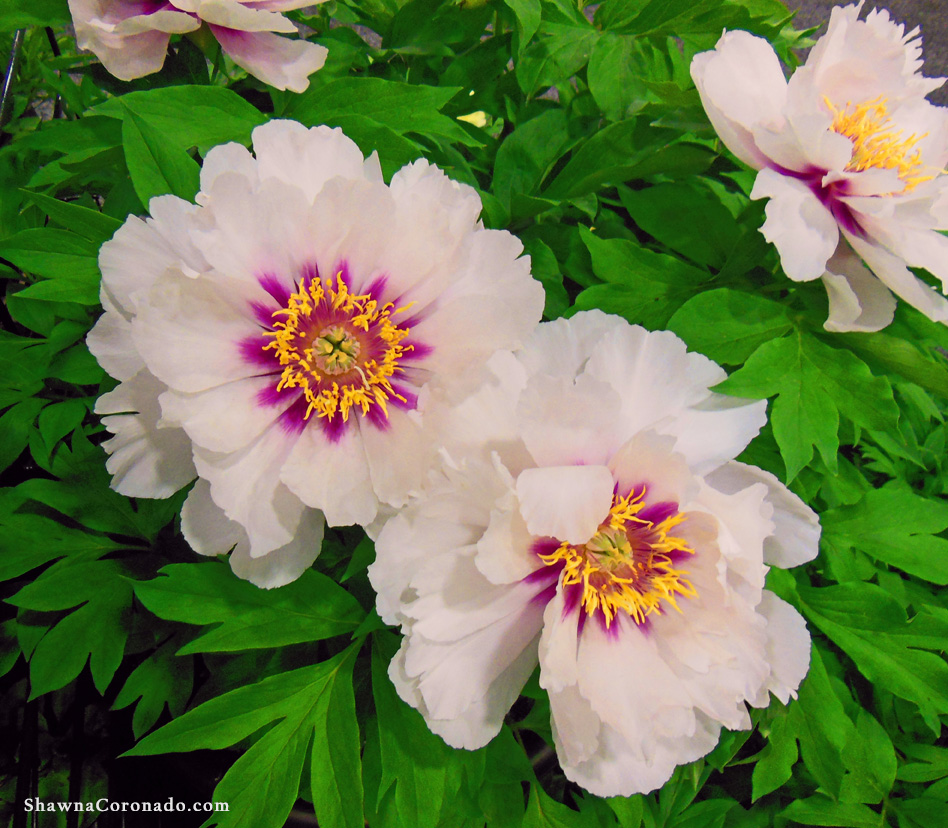Tree Peony Shrub Growing Tips

Tree peony shrub or the Chinese peony shrub is not the traditional herbaceous perennial peony plant you remember your sweet grandmother growing.
What is the Tree Peony Shrub?
Tree peonies are woody shrubs. They grow to be approximately 4 feet tall and wide with very fragrant flowers. They have long fibrous roots and the flowers can be 10 inches wide; plants require no staking. Some tree peonies can live exceptionally long lives, up to 100 years. So when you plant a tree peony shrub, you are really planting an investment in your landscape. Many common Chinese tree peonies go by the Latin designation, Paeonia suffruticosa. However, there are other species of tree peony. P. rockii, for instance, is a species commonly used as an herbal remedy in traditional Chinese medicine. Below is an excerpt from the Indiana Getting Started Gardening Guide on the tree peony.
- Botanical name — Paeonia suffruticosa
- Bloom Period and Seasonal Color — Late spring and early summer; white, pink, coral, red, maroon, purple, and yellow flowers
- Mature Height × Spread — 4 feet × 4 feet
- Added Benefits – Attracts hummingbirds and pollinators
- Sun Requirements – Sun, Part-Sun
When, Where, and How to Plant –
Tree peonies prefer rich, loamy, soil that has excellent drainage, and they perform better in part shade to full sun, requiring at least five hours of sun per day. Test soil to see necessary amendments. If heavy clay, consider amending soil with rotted manure, compost, and worm castings to enrich and enhance drainage. Plant a tree peony in fall or spring, making sure the site is not located near large trees, which can pull nutrients and water away from the shrub. A tree peony typically blooms in the fifth year of its life. When purchasing the plant, be sure to discuss its age with the nursery team.
Growing Tips –
Mulch the ground well around a tree peony to ensure moisture retention and provide winter protection; prolonged drought and heat stress can cause the plant to go into early dormancy. Tree peonies are heavy feeders but do not care for “hot” (fast) fertilizers, they prefer slow-release organic fertilizers applied regularly and enjoy spring treatments of fresh compost topdressings.
Advice and Care –
To overwinter a tree peony, mulch well. Some experts suggest wrapping the plant with burlap. Mulch the soil well as it helps to protect the plant. Do not prune except to remove dead branches because the buds will return on the stems in spring. Tree peonies can be plagued with fungal issues such as blight and powdery mildew. Be sure to water at the base of the plant to help prevent disease. Fungal issues can be controlled with an organic fungicide.
Companion Planting and Design –
Tree peonies are delightful in perennial beds as specimens. They’re interesting planted in groupings with other spring-flowering perennials. Because of their flowering nature, tree peonies make a wonderful contribution to a pollinator garden. Their sweet-smelling blooms make good cut flowers; one peony blossom can perfume an entire room. If you would like to learn how to grow a garden, particularly in the Midwest, please get my book, the Indiana Getting Started Garden Guide.

Tree peony shrubs have long lives – up to 100 years. They have strong woody stems that remain all winter. They drop their leaves in the fall like trees and other shrubs do. While regular herbaceous peonies are more a perennial plant, producing lots of leaves that collapse over the cold season and regrow in the spring.
Yes! Peonies are edible. The flowers can be eaten in a salad or used to create a jelly that tastes very much like a tutti-fruity flavor. The jelly can be spread on toast, used in cooking, or used to make cocktails and drinks.



